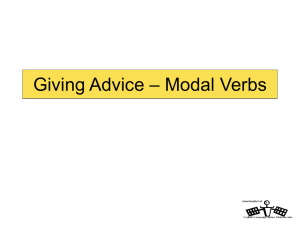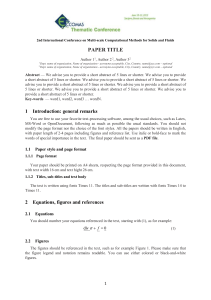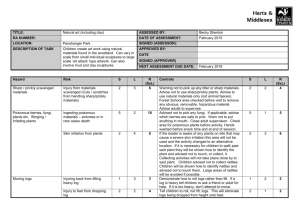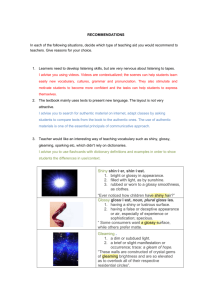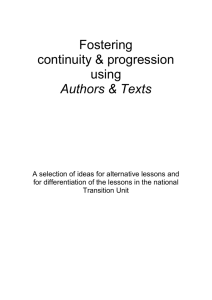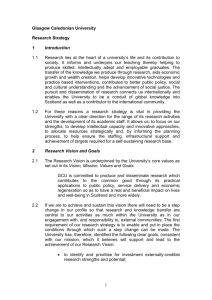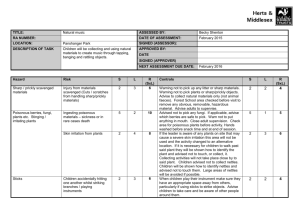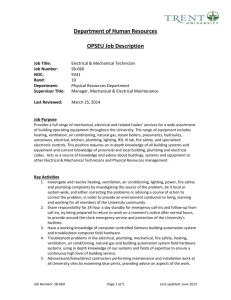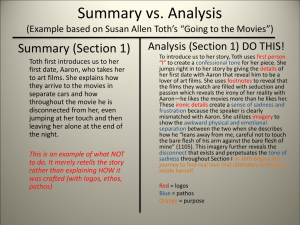L.O. Writing to Advise
advertisement
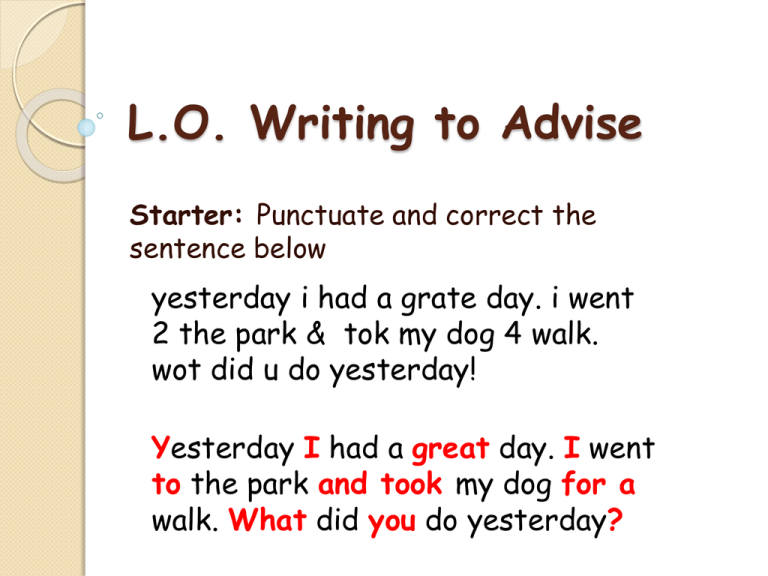
L.O. Writing to Advise Starter: Punctuate and correct the sentence below yesterday i had a grate day. i went 2 the park & tok my dog 4 walk. wot did u do yesterday! Yesterday I had a great day. I went to the park and took my dog for a walk. What did you do yesterday? WHAT IS WRITING TO ADVISE? Can you tell someone (how) to do something? Can you give advice to your friends and family? Can you make suggestions? E.g. may, might, can, could. THEN YOU CAN WRITE TO ADVISE! HAVE A GO AS A CLASS Read the problem below based on the film !!! Dear Agony Aunt Annie, I really want to be a member of the T Birds! Wherever they go and whatever they do, people stop, take notice and listen. Nobody ever takes any notice of me. I really want to be cool and popular but when I start to dress differently or make jokes in class I either get teased or shouted at. When I asked the T Birds to let me be a gang member, they just laughed and walked off. Please give me advice on how I can transform myself and be accepted by them. Aaron HOW SHOULD WE ADVISE HIM? When structuring your response, you should think about the following questions and try to give the sort of advice an agony aunt might provide. Often, an agony aunt will try to make someone feel happy in their own skin and boost a person’s confidence. Think about and discuss in your groups: 1.Is it possible to advise someone on how to be ‘cool’ or ‘popular’? If not, what advice can you give them instead? 2.Should Aaron keep on trying to transform himself? If so, should he have a makeover/buy some new clothes, start to copy the fashion of someone he likes, or do something else altogether? 3.Would being a gang member necessarily give Aaron the sense of power and support that he seems to want or might he find it elsewhere? STOP! DON’T WRITE YET! Now you have your task you are full of ideas...but STOP! Do not be tempted to start writing an answer.... First you must PLAN! URPOSE UDIENCE ANGUAGE AYOUT Brainstorm/make notes on ideas for responses in your groups too! STOP! DON’T WRITE YET! Now have a look at the checklist below. Think about how to use these features in your advice writing. 1. Make suggestions (may, could, might, can) 2. Give choices 3. Be encouraging and kind 4. Be understanding 5. Try and put yourself in Aaron’s position and show empathy 6. Be clear/specific STOP! NOW GO!! Now that you have carefully planned your answer you can start writing. DON’T FORGET! Remember the starter? Don’t make silly mistakes just because you didn’t proofread your work! Think about paragraphs, spellings, missing words. When you’ve finished ask yourself... ”How can I improve this writing even more?” Advise Can you tell someone (how) to do something? Text types Word Level Recipes Manuals Imperative verbs, e.g. ‘Put’, ‘Grate’ (bossy Prepositional phrases, e.g. ‘Above your head’, Sentence Level Word Level verbs) ‘Under your seat’ Active sentences Use of colon prior to lists Use of second person, e.g. ‘you’ Sequential connectives, e.g. ‘First, ‘Secondly’ etc Sequential (written in order, step by step) Clear unfussy central layout Easy to scan for next instruction (use headings) Write an advice manual or recipe on how to dump someone! STOP! PLAN! NOW WRITE! (And don’t forget to proofread and improve your writing too!)
